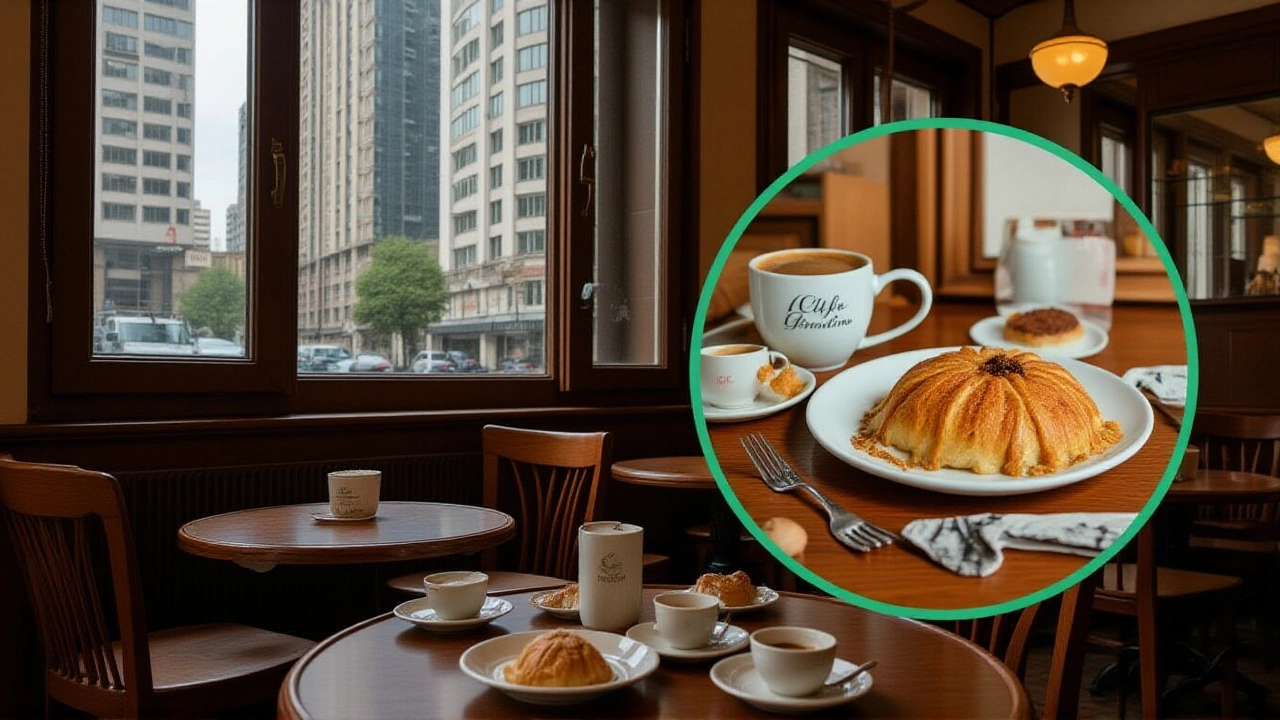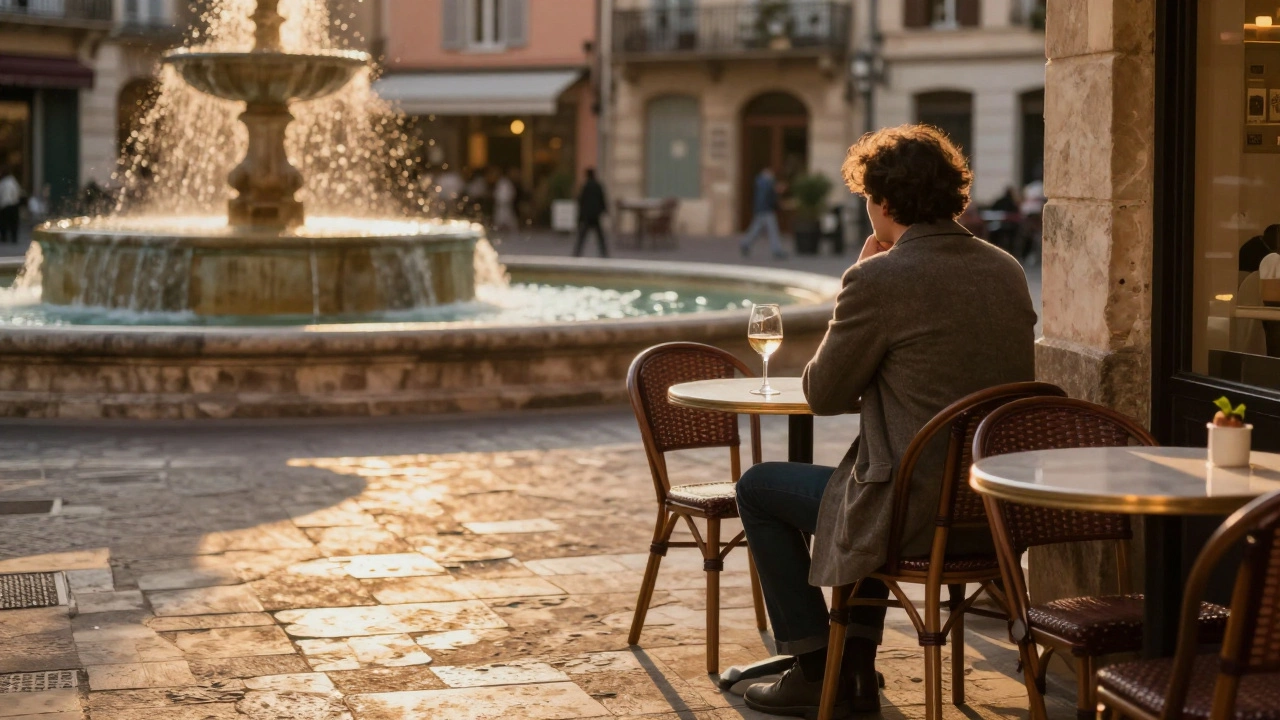São Paulo’s Historic Café Girondino Reopens, Restoring Coffee Legacy

When Café Girondino flung open its doors again in November 2023, the aroma of freshly brewed espresso seemed to carry a century‑old promise back onto the bustling sidewalks of São Paulo. The café, which first welcomed patrons in 1875, had shuttered its windows in early June for a brief, almost dramatic pause, only to return under new management with a refreshed menu and a polished three‑story interior. For locals and tourists alike, the reopening isn’t just about a cup of coffee – it’s a chance to sip history in a city that prides itself on blending the old with the new.
Historical Roots: From Rua 15 de Novembro to Boa Vista
Founded by Italian immigrant Giuseppe Girondino, the original storefront sat on Rua 15 de Novembro, a bustling artery of commerce in the late 19th century. By 1902 the café had outgrown its modest space and migrated to the corner of R. Boa Vista, 365 – a spot that offers a direct line of sight to the imposing São Bento Monastery and the historic Paulistano Mercado Municipal. The move cemented the café’s role as a meeting place for São Paulo’s coffee elite, a role it kept through two world wars, the 1950s coffee boom, and the city’s rapid modernization.
Archival photographs on the upper floors show patrons in period clothing, and the original wooden bar, salvaged during the 1998 renovation, still serves as a tangible link to the past. Dr. João Pereira, a professor of urban history at the University of São Paulo, told us, “Café Girondino is a living archive. Every table, every copper kettle, tells a story of the city’s evolution from a coffee‑export hub to a global metropolis.”
Recent Renovation and the November Reopening
After a decade‑long lease change, the establishment closed its doors in June 2023 for a short‑term refurbishment that went beyond a simple paint‑job. New owner Ana Silva, who grew up sipping cortados at the café’s lower level, oversaw the refit. “We wanted to honor the café’s history while inviting a new generation of coffee lovers,” Silva said during the ribbon‑cutting ceremony. The ground floor now opens at 07:30 on weekdays and 08:00 on weekends, offering an expanded breakfast menu alongside classic espresso drinks.
Modern touches include Wi‑Fi, climate‑controlled seating, and menus printed in both Portuguese and English – a subtle nod to the growing influx of English‑speaking tourists. The upper floors house antique photographs, a modest library of coffee‑related literature, and a small event space that hosts weekly poetry readings and jazz evenings.
Visitor Experience: Reviews, Ratings, and What People Are Saying
On TripAdvisor, the café currently enjoys a 4.3‑out‑of‑5 rating based on 1,079 reviews, landing it at #305 out of 12,094 restaurants in the city. One of the most detailed accounts comes from Michael U, a traveler from Las Vegas with more than 50,000 contributions on the platform. He wrote in September 2019, “The larger‑than‑average cheese bread was soft and gooey like a gougère, and the Bolinho de Bacalhau was tasty but a bit greasy around the otherwise enjoyable centre of potatoes, herbs, and fish.” He added, “The ‘BRAVO’ espresso was still piping hot but a tad too bitter without sugar, while the orange cake covered in chocolate frosting and the banana cake were both moist and fairly priced.”
Other guests love the view of the São Bento underground station and the gentle clatter of porcelain that fills the air each morning. The price point, while not the cheapest in town, is defended by many as “worth the experience of drinking coffee in the oldest café of São Paulo.”
Cultural Significance: A Bridge Between European Heritage and Brazilian Identity
São Paulo’s European roots are evident not only in the architectural details of Café Girondino but also in its menu, which features items such as pão de queijo, a Brazilian staple, alongside Italian‑style pastries. The café’s proximity to the Farol Santander and the bustling 25 de Março shopping district makes it a natural waypoint for cultural tourists weaving through the city’s historic centre.
Local historian Ana Mendes notes, “The café’s multilingual menus reflect the city’s cosmopolitan nature. It’s a place where a Brazilian works alongside a tourist from New York, and they both order the same espresso. That shared ritual is a subtle but powerful gesture of cultural exchange.”
Looking Ahead: What’s Next for Café Girondino?
Silva plans to introduce a rotating “heritage blend” coffee sourced from small farms in the state of Minas Gerais, marketed as a homage to the coffee plantations that once powered São Paulo’s economy. A small mentorship program is also in the works, aimed at training young baristas in traditional brewing methods.
The café’s management is in talks with the municipal tourism board to feature Café Girondino on official heritage tours, a move that could boost foot traffic during off‑peak hours. If the café continues to blend preservation with innovation, it may well become a template for other historic eateries across Brazil.

Frequently Asked Questions
How does the reopening affect tourists visiting São Paulo?
The café’s refreshed menu and English‑language menus make it an easy stop for international visitors. Its central location near the São Bento underground station and popular attractions like Farol Santander means tourists can fit a historic coffee break into a day of sightseeing without losing time.
What historical elements have been preserved after the renovation?
Key features such as the original 19th‑century wooden bar, antique photographs, and the façade’s neoclassical cornices were retained. The upper‑floor décor still showcases period furniture, giving guests a sense of stepping back into 1900‑era São Paulo.
Are there any plans for new menu items?
Owner Ana Silva announced a “heritage blend” coffee sourced from Minas Gerais farms, plus a seasonal pastry line that will highlight traditional Brazilian sweets with a modern twist. Expect a limited‑edition feijoada‑inspired pastry later this year.
How does Café Girondino compare to other historic cafés in Brazil?
While Rio de Janeiro’s Café do Museu also touts a long history, Girondino’s continuous operation since 1875 and its central placement in São Paulo’s historic district give it a unique standing. Its blend of European décor and Brazilian culinary touches sets it apart from the more colonial‑styled venues elsewhere.
What impact does the café have on the local economy?
Beyond direct employment for baristas and kitchen staff, Girondino draws foot traffic to nearby shops and markets. The café’s partnership with local suppliers for baked goods and coffee beans supports small‑scale producers and reinforces the city’s reputation as a hub for quality gastronomy.
